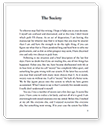Appeal Essays and Research Papers
Instructions for Appeal College Essay Examples
Title: whatever you think
Total Pages: 2 Words: 793 Works Cited: 0 Citation Style: APA Document Type: Essay
Title: Appeals
Total Pages: 1 Words: 421 Bibliography: 1 Citation Style: MLA Document Type: Research Paper
Title: Hello I m Eisaku international student Japan I write appeal letter I m appeal UCR transfer Fall 2012 UCR rejected I messed deadline report Spring grades Meanwhile I allowed appeal UCR revert decision providing a good appeal letter provable evidence I I admitted
Total Pages: 2 Words: 543 Sources: 0 Citation Style: APA Document Type: Essay
Title: Independent Research Project
Total Pages: 4 Words: 1926 References: 2 Citation Style: None Document Type: Research Paper


